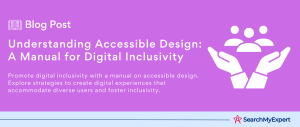Future Technologies in Digital Design
The Essence of Digital Design in the Modern Era
In the tapestry of today’s digital-first world, digital design emerges as an essential thread, interwoven into the very fabric of our daily lives. It transcends mere aesthetics, becoming a crucial tool in communication, information dissemination, and user experience enhancement.
The Crucial Role of Digital Design
Digital design isn’t just about creating visually appealing content; it’s about crafting experiences. It plays a pivotal role in how we interact with technology, from the intuitive layouts of mobile apps to the immersive worlds of video games. It’s the bridge between technology and the user, making complex systems accessible, engaging, and enjoyable.
Technological Advancements: Accelerating Change in Design
The digital design landscape is ever-evolving, driven by relentless technological advancements. These innovations continually redefine the boundaries of what can be achieved, offering new tools and techniques to transform ideas into digital reality.
Impact of Tech Evolution on Design
As technology evolves at a breakneck pace, so does the realm of digital design. We’re witnessing a shift from traditional design methods to more dynamic, interactive, and user-centric approaches. This evolution is not just changing how designers work; it’s changing what they can create.
Future Technologies: Redefining the Realm of Digital Design
The future of digital design is not just an extension of the present; it’s a new frontier. It promises a world where design is more immersive, interactive, and intelligent than ever before.
Setting the Stage for Innovation
As we embark on this exploration, we’ll delve into cutting-edge technologies like AI, VR/AR, 3D printing, and beyond. These aren’t just tools; they’re gateways to new realms of creativity and expression in digital design.
Artificial Intelligence (AI) in Design
Revolutionizing Design with AI: A New Era of Creativity
Artificial Intelligence (AI) is not just a buzzword in the digital design sphere; it’s a game-changer. It’s transforming the design process by introducing levels of automation, personalization, and data-driven insights that were once unthinkable.
AI in Automating Design Processes
AI’s ability to automate tedious and repetitive tasks is a boon for designers. This automation goes beyond basic tasks, enabling complex design decisions to be made quickly and efficiently. From color scheme selection to layout adjustments, AI can handle a range of activities, freeing designers to focus on more creative aspects.
AI-Powered Tools: Pioneering a New Design Frontier
The advent of AI-powered tools has marked a turning point in digital design. These tools are not just about efficiency; they’re about expanding the creative horizon.
Examples of AI in Design Tools
- Logo Generators: AI-driven logo generators can create unique logos based on user inputs, offering a plethora of design options in seconds.
- Layout Optimization Software:
These tools analyze user engagement and behavior to suggest optimal website or app layouts, enhancing user experience. - Content Creation Platforms:
AI platforms can generate graphic elements, suggest design improvements, and even create entire web pages.
Enhancing Creativity and Efficiency
AI’s role in digital design is not to replace human creativity but to augment it. By handling routine tasks and providing insightful data, AI allows designers to focus on innovation and creativity.
The Creative Synergy of AI and Designers
The collaboration between AI and designers is creating a new paradigm in digital design. AI’s analytical capabilities, combined with a designer’s creative flair, lead to more personalized, dynamic, and effective designs.
Immersive and Interactive Design
The Dawn of Immersive Technologies in Digital Design
The advent of immersive technologies like Virtual Reality (VR), Augmented Reality (AR), and Mixed Reality (MR) has ushered in a new era in digital design. These technologies are not just tools; they are gateways to worlds where the lines between the real and the virtual blur, creating unparalleled interactive experiences.
VR, AR, and MR: Pioneering a New Design Frontier
Virtual Reality (VR) immerses users in entirely digital environments, while Augmented Reality (AR) enhances the real world by overlaying digital information. Mixed Reality (MR) blends both, creating a hybrid space where digital and physical elements coexist and interact. These technologies are revolutionizing design by providing immersive platforms for creative expression and interaction.
Applications: Beyond the Boundaries of Traditional Design
Immersive technologies are finding applications in diverse fields, redefining the scope of digital design.
Interactive Product Visualization
VR and AR enable designers to create interactive 3D models of products, allowing users to explore every angle and feature in a virtual space. This capability transforms how consumers interact with products before purchase, enhancing their understanding and engagement.
Next-Generation User Interface (UI) Design
The rise of immersive technologies is propelling UI design into a new dimension. Designers can now create interfaces that are not just visually appealing but also interactive in three-dimensional space, offering users a more intuitive and engaging experience.
Storytelling Redefined
VR and AR are powerful tools for storytelling, providing an immersive platform for narrative experiences. They allow designers to craft stories that are not just observed but experienced, creating a deeper emotional connection with the audience.
Envisioning the Future: Interactivity in Design
The future of digital design with immersive technologies promises a world where users don’t just view digital creations but interact with them in real-time. This paradigm shift opens up endless possibilities for creativity, collaboration, and user engagement in the design process.
Generative Design and Algorithmic Creativity
The Emergence of Generative Design: Algorithms at the Helm
Generative design represents a significant paradigm shift in the creative process. It’s where algorithms and machine learning converge to spawn design solutions that are not only innovative but also highly optimized. This technology leverages computational power to explore a vast landscape of design possibilities, driven by specific parameters and constraints set by designers.
The Power of Algorithm-Driven Design
Generative design is akin to having an ultra-intelligent design assistant that can process thousands of possibilities, iterating and refining to find the most effective solution. This approach is particularly transformative in fields like architecture and product development, where efficiency, aesthetics, and functionality are paramount.
Generative Design: A Crucible of Innovation
The potential of generative design lies in its ability to push the boundaries of creativity and innovation.
Revolutionizing Architecture and Product Development
In architecture, generative design can create structures that are not just visually stunning but also optimized for factors like light, heat, and space utilization. Similarly, in product development, this technology can generate designs that are ergonomically sound, materially efficient, and aesthetically pleasing, all while adhering to specified constraints.
Ethical Considerations and the Human Element
As we embrace the wonders of AI-generated design, it’s crucial to consider the ethical implications. The question of authorship, the value of human creativity, and the potential for AI to influence design trends all need careful consideration.
Balancing AI and Human Creativity
While generative design can offer incredible efficiency and innovation, the role of the human designer remains irreplaceable. The creative intuition, understanding of context, and emotional intelligence that humans bring to the table are aspects that AI cannot replicate. Therefore, the future of design lies in a collaborative relationship between human ingenuity and algorithmic efficiency.
The Rise of Voice and Conversational Interfaces
Voice-Based Interactions: Reshaping Digital Design
In an era increasingly dominated by smart assistants and voice-controlled devices, the role of voice in digital design is becoming more prominent. This shift from traditional, tactile interactions to voice-based commands marks a significant evolution in user interface (UI) design.
Embracing Voice Interaction in Digital Design
Voice interaction represents a fundamental change in how users engage with digital products. It emphasizes natural, conversational experiences, moving away from graphical user interfaces (GUIs) to more intuitive, voice-driven interactions.
The Art of Designing for Voice
Designing for voice involves a unique set of challenges and considerations, distinctly different from visual design.
Crafting Conversational Interfaces
Designers are now focusing on creating interfaces that cater to natural language processing (NLP) and understand the nuances of human speech. The key is to design experiences that feel natural, intuitive, and conversational, allowing users to interact with digital products as they would with another human being.
Envisioning a Voice-First Future
The future of digital design could very well be one where voice is the primary mode of interaction. In this future, screens and touch inputs become secondary to the more natural and accessible voice commands.
The Potential of a Voice-Driven World
Imagine a world where voice commands control everything from our smartphones to our cars, and even our home appliances. This voice-first approach could revolutionize accessibility, making technology more inclusive and available to a broader range of users, regardless of their ability to use traditional interfaces.
Design for Sustainability and Accessibility
Embracing Sustainability in Digital Design
The concept of sustainability is taking center stage in the world of digital design. As awareness of environmental issues grows, so does the commitment to eco-friendly practices in the digital realm.
Tools and Technologies for Sustainable Design
Innovative tools and technologies are emerging to promote resource efficiency in digital design. These range from software that minimizes energy consumption during usage to platforms that advocate for sustainable design principles.
The Imperative of Accessibility in Design
Accessibility in digital design is about ensuring that digital experiences are inclusive, catering to users of all abilities. It’s a commitment to breaking down barriers and creating experiences that are usable by everyone.
Designing for All: A Universal Approach
Designing for accessibility involves understanding and implementing principles that make digital products navigable, understandable, and usable for people with a wide range of abilities, including those with disabilities. This approach is about inclusivity, ensuring no one is left behind in the digital landscape.
The Designer’s Role in Shaping a Better Future
Digital designers play a crucial role in shaping a sustainable and equitable future.
Designers as Agents of Change
By integrating sustainability and accessibility into their work, designers are not just creating aesthetically pleasing and functional products; they are also advocating for a more responsible and inclusive digital world. Their work has the power to influence behaviors, shape cultures, and drive change towards a more sustainable and accessible future.
Embracing the Future of Digital Design
As we conclude our journey through the future of digital design, we reflect on the key insights gained:
- AI and Machine Learning:
These technologies are revolutionizing design processes with automation, personalization, and data-driven insights, enhancing creativity and efficiency. - Immersive Experiences with VR/AR/MR:
These tools are creating new dimensions in digital design, allowing for more interactive and engaging user experiences. - Generative Design and Algorithmic Creativity: This approach leverages AI to generate optimized and innovative solutions, particularly impactful in architecture and product development.
- Voice and Conversational Interfaces: The rise of voice-controlled devices is reshaping user interaction, emphasizing natural, intuitive communication methods.
- Sustainability and Accessibility: A growing focus on eco-friendly practices and inclusive design is shaping a more responsible approach to digital design.
Challenges and Opportunities
With these advancements come challenges: maintaining ethical standards in AI, ensuring accessibility, and balancing technological possibilities with sustainable practices. However, these challenges also present opportunities for designers to innovate and create impactful, meaningful digital experiences.
The Future is in the Hands of Designers
As we look towards the horizon of digital design, the role of designers becomes ever more crucial. You, the designers, are the architects of this digital future. Embrace these technologies, but do so with a sense of responsibility and creativity. Your designs have the power to inspire, to transform, and to make a lasting impact on the world.
Conclusion
The future of digital design is a vibrant landscape shaped by transformative technologies like AI, VR/AR, generative design, voice interfaces, and a focus on sustainability and accessibility. These advancements offer both challenges and immense opportunities for designers to innovate and create more engaging, inclusive, and responsible digital experiences. The future of design lies in the hands of creative professionals who are ready to embrace these changes and use them to shape a better world.
Transform your digital strategy with top Digital Design Companies.
Table of Contents
Toggle






